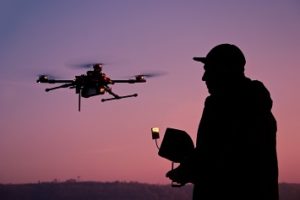What’s the most dangerous thing your workers do? Do they climb communication towers? Do they enter hazardous environments or situations? Do they travel on rough terrain? What if you could automate those tasks in ways that kept your employees out of harm’s way? What if, by doing so, you could significantly increase the efficiency and reduce the costs of your operation?
With the latest in unmanned aerial vehicle (UAV) technology—drones, that is—you might be able to do just that.
Outside the armed forces, the construction and telecommunications industries have developed the most widespread use of UAVs for workplace applications. Here’s a look at how they’re using this technology to make the workplace safer by keeping workers out of harm’s way and by making inspections quicker, closer, and more thorough.
Getting a Good Look
Recreational users were among the first to mount cameras on drones and use them to take pictures that would otherwise be expensive, difficult, or dangerous to obtain. In the construction and telecommunications industries, this technology can be used to go to places that might put people at risk—like up in a communication tower or into an area with a hazardous atmosphere. The idea has been or is being adapted for use in:
- Construction project planning. Drones can create detailed aerial maps of construction sites, which can be turned into three-dimensional structural models that can be used for detailed topographical analysis and for volumetric measurements. The potential applications are extensive. For example, construction contractors can use the technology to closely monitor resources like sand and gravel and to distribute them efficiently around the jobsite.
- Monitoring of construction workflow. During the construction of the Golden 1 Center, the Sacramento Kings’ new arena, UAV imagery was used to closely monitor construction progress. Software was used to integrate the drone photographs with other images taken at the site using tablets and handheld cameras and to construct four-dimensional images—integrated models that show the current status and expected progress of a project, enabling contractors to closely monitor the project with a high level of detail.
- Construction and maintenance. UAVs may soon be equipped to actually perform construction tasks. Called Flight Assembled Architecture, the application is still in its demo stage, but UAVs can carry and assemble prefabricated components, so putting that ability to practical use may not be far off. UAVs are already widely used for the inspection of tall structures, like smokestacks and communication towers, and difficult-to-reach areas, such as the undersides of bridges. They can identify areas in need of maintenance and can perform tasks like spray-coating structural components.
- Transporting tools, equipment, and materials. This capability has obvious applications not only on construction sites but also in warehouses and home delivery of small items, like pizzas.
But, like any new technology, UAVs have both benefits and drawbacks. Tomorrow we’ll look at some of the hazards that UAVs pose.


UAVs have a strategic value to many business and industries. They can be used to reduce risk of occupational injuries by preventing workers from climbing, view a chemical incident, transport packages, prevent unprotected workers from entering a dangerous area, etc. On the hand, without proper precautions, these devices can create mishaps or near-miss incidents by flying into or distracting low flying aircraft, contact with wildlife in air, create unwanted distraction for people unfamiliar with their existence in public places, and used by criminals to harm people by carrying weapons of destruction. If there was mandatory state registration or licensing process, training provided to users, and social responsibility for recreation; the technology could be used to enhance all of our lives.